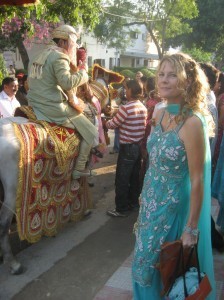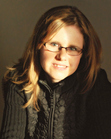Writer Interview: Christina Adams on Autism, Camel’s Milk, and Inspirational Spaces
I met writer Christina Adams while living in Orange County, Calif. I had started a creative nonfiction writers group, and she was one of several who faithfully attended. In our meetings, I came to know Christina as a beautiful person: a writer who is whip-crack smart and not afraid to confront reality. Read on for what drives Christina to write, despite (and because of) tremendous hardship and call after call to rise in the face of adversity.
1) Where (in what state) do you write?
I write in southern California, where I live in Laguna Beach.
2) Do you find that place – your geographic surroundings – influence your writing?
Yes. I started using Appalachian settings in a novel that won a graduate school prize. I was polishing it when my son was diagnosed with autism. I dropped the novel to create his therapy program (as told in my book, A Real Boy). My new life inspired a transition to nonfiction, and I started writing memoir and essays for magazines, newspapers and NPR. My nonfiction reflects my lifestyle in California, but I sometimes travel to interview my subjects, both in the US and internationally. I try to understand and convey their origins and values. Some of my most inspiring interviews have been with the Amish, Middle Eastern and Somali people I’ve met.
3) Describe your writing space. How did it come into being, and why is it significant?

Christina Adams’ writing space and partner desk. Photo courtesy of Christina Adams.
I had a home office for grad school and wrote my memoir there. But then divorce happened, and I lost my home office. As a single mom, I had a desk in my bedroom. I wrote there sometimes, and other times I hand-wrote on a small patio.
When I remarried, my husband wanted us to have a partner desk, so we could face each other while writing independently. We found a small English partners’ desk from around 1910, with a delicate Florentine leather surface. It’s centered in an open great room downstairs, so we’re together even when we’re busy. That was his goal—the romantic that he is—but I love it, too.
Our house was soaked by a once-in-a-century flood after we moved in. In the renovating, we had the chance to create our vision of “a British Viceroy’s beach lodge in India,” inspired by our love of antiques and Indian style. The walls are light blue with white beams. A master floor craftsman laid a walnut herringbone floor with “highs and lows,” making it a bit uneven, like European floors. We replaced a rough Norman Cottage-type mantel with a custom Georgian mantel featuring faux-painted tortoiseshell inlays. A plain wall with brown beams was banished. In its place went arches and columns modeled after The Lake Palace in Udaipur, India, where we stayed for a few precious honeymoon days.
This is the home where I now work. Upstairs I have a small office with a green velvet fainting sofa, and I rely on that sofa for a break after a few hours of deep writing.
4) When do you do your writing?
I primarily write on weekdays at home, like a real job with more breaks and less pay.
5) Where do you find inspiration for what you write?
I find inspiration where life meets need. If I have an experience or detect a trend, but realize no one’s talking about it, I’ll get into it. I also freelance in health and business topics. I like to think that the knowledge I gain from those assignments might inform my work, but it doesn’t as much as I’d like.
6) Why do you write?

Adams at an Indian wedding, Chandigarh, India. Photo courtesy of Christina Adams.
I was born with a need to write. You can also call it epigenetics, where genes are ripe for change when impacted by their environment. I’m sort of a natural reading savant, and I grew up in a house loaded with books. I started writing as a child.
7) What are you working on right now? How did the project come to you, and why is it important?
In October 2005, after my book came out, I took my son to a children’s book fair, where I saw a man with a camel. So I went to find out why a camel was there if no kids were riding it. When the man said he sold soaps and lotions made from camel’s milk, for some unknown reason I asked, “What else do they do with it?” He told me it was given to premature babies in Middle Eastern hospitals and thought to be non-allergenic. I had a strong intuition that camel’s milk might help my son’s immune system, and maybe improve his functioning. I also wondered if it could be a suitable dairy substitute for people who can’t have cow milk.
I went home and researched camel’s milk on Pub Med, the medical journal data base, but I found nothing significant. A few months later, I discovered a report by an Israeli veterinarian that suggested some autistic kids who consumed camel milk showed improved functioning. I managed to import some frozen raw Bedouin camel milk. I gave some to my son, and I witnessed an incredible overnight improvement in his autism symptoms.
I never looked back.
My work in progress is about my journey from a newly single mom to camel milk advocate, and how I found true love along the way, against a backdrop of Amish, Bedouin, Middle Eastern, African and other camel cultures. After writing and lecturing about camel milk since 2012, I published my first medical journal article in 2013–an unusual credit for an MFA graduate who’s not an MD or PhD! So I actually ended up writing the Pub Med article I was looking for back in 2005. And I have a new project underway now with UC-Irvine on camel milk.
8) What is one of the most important lessons you have learned through the writing process?
I have learned to be honest in fact and bold in the story. If you have something to say, even if it’s been written a thousand times before, writing it with truth and skill means someone will read it.
9) How do you balance time to write with other facets of life that demand attention?
If you’re a parent, it’s all about the babysitting. If you’re not a parent, it’s about how much energy you have after work, and whether you want to spend your free time writing. I’ve been in both situations over the years. I did a lot of writing, media and speaking from 2001-2009. But in that period after separating from my son’s father in 2005, I encountered new challenges. Living on my own as the main caregiver for my son with no help or family nearby was a tremendous challenge. I did some freelance work for businesses and newspapers, but when the execs wanted to talk at 5 pm as they stepped off a plane and I had already picked up my son at 4, it was too hard.. Before my son started drinking camel milk, he required even more supervision. With all of these challenges at play, I realized I couldn’t re-enter the business world. Plus I got sucked into a powerful divorce vortex, and the time and focus for a new book receded every day.
I met my now-husband 2007, after an intense daily reading and writing journey in which I reflected on my future goals and happiness. It was lovely to leave the sterile emotional landscape of a past marriage and enter a marriage filled with compassion and devotion. Enjoying our courtship, blending my new family of three stepdaughters and my son, and travelling took time. I hated not publishing for around three years, but I was also researching camel milk, which only required a Skype account and a computer. Then I started writing pieces for Autism File Magazine. Now that my son has matured, is doing well and spends more time away from me, I’ve returned to steady writing.
Sometimes you have to put yours or others’ needs before the need to write, whether those needs are economic, health or emotional. But that doesn’t mean you should ever stop writing all together. It’s still healthy to fit in a little writing, so you feel empowered and don’t lose your “writer thought patterns” or confidence.
10) Who is your favorite author? Why? How were you first exposed to this writer?
Somerset Maugham is a favorite classic author of mine. He wrote the first major book I read as a child, Of Human Bondage. My mom, a coal miner’s daughter from a family who loved education but didn’t get much of it, had it at home. Later, I admired how Maugham’s other books delicately brought raw social situations to life, such as in Mrs. Craddock and Cakes and Ale.
11) Do you find that seasons inform your work?
Not really. I love them, but they only enter my work when I’m writing about them specifically. Nature is part of my general inspiration, since I grew up among woods and trails. And now I spend time on camel farms, so I enjoy and describe those varied landscapes. If I lived in a place less sunny, I’m sure seasons would be more influential!
12) Who have been some of your biggest influences?
My mom started reading Edgar Allan Poe to me as a baby. I read through our small county library as a kid. I’d read six to 10 books a week. Those myriad writers loaded me with riches. My teenage reading of John Steinbeck (Grapes of Wrath, East of Eden) and the poetry of John Donne, Robert Creeley and Frank O’Hara, to name a few, gave me a sense of wordplay, immediacy and structure. I admire women who push cultural boundaries with their traditions, like Sojourner Truth, Patty Smyth and Anne Sexton. Women are largely missing from history, but I’m moved by the work we do have, like the Chinese and Middle Eastern women who left some brilliant and moving poems. I like how John Krakauer blends first-person narrative with nonfiction.
I’m satisfied when the truths of one person emerge as universal, in fiction or nonfiction. Anyone who tells the truth is a hero to me.
Connect with Christina:
via Facebook – https://www.facebook.com/christinaadamsauthorautismadvocate
via Twitter – @camelmilkinfo
via Email - cadams@xiqllc.com



